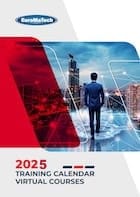How to Organise Office Supplies for Corporate Efficiency
A Practical Guide to Streamlined Operations, Productivity, and Workplace Effectiveness
An efficient office doesn’t happen by accident—it’s the result of clear systems, streamlined tools, and thoughtfully organized supplies that support daily operations. Organising office supplies is a deceptively simple task with powerful consequences. When done right, it enhances workflow, reduces time waste, minimizes unnecessary spending, and supports a productive working environment.
In many organizations, disorganized supply areas, duplicated purchases, or inconsistent tracking lead to operational delays, budget overages, and frustrated teams. This guide explores how to structure and maintain a high-functioning office supply system that enhances corporate efficiency. It also connects you to practical skill-building through Euromatech’s industry-recognized training options, including the Office Management and Effective Administration Skills – Office Management Professional Course and the Certified Office Management Professional Course.
Why Office Supply Organisation Matters
Corporate environments rely on consistent access to essential tools—from printers and pens to safety gear and digital accessories. When supplies are poorly managed, the impacts are immediate:
- Employees waste time searching for items
- Departments over-purchase or under-utilize
- Stock expires or goes unused
- Frustration disrupts workflow
- Budget control becomes nearly impossible
In contrast, a well-organized office:
- Enhances staff autonomy and productivity
- Supports procurement efficiency
- Maintains inventory visibility
- Reduces waste and duplicate orders
For office managers and administrative professionals, supply organization is not a clerical function—it’s an operational strategy.
Step-by-Step: How to Organise Office Supplies for Corporate Efficiency
-
Audit Current Supplies and Systems
Begin with a full inventory audit. Identify:
- What’s available
- What’s frequently used vs. rarely used
- What’s expired, damaged, or obsolete
- Where supplies are stored
- Who manages reordering
This audit creates visibility and often reveals hidden inefficiencies or redundancies. Use a digital tracking tool or spreadsheet for clarity.
The Office Professional and Records Management Masterclass Course teaches auditing, records tracking, and document-based supply controls to ensure long-term clarity.
-
Categorise Supplies Based on Function
Group items logically:
- Daily-use supplies (pens, notepads, toner)
- Project-based supplies (flipcharts, whiteboard markers)
- Specialty items (company stamps, branded material)
- Emergency stock (first-aid kits, batteries)
Labelling and sorting by use-case or department ensures that teams can quickly access what they need without overstocking shared supplies.
-
Establish Storage Zones and Standards
Avoid scattershot supply drawers and unlabelled cabinets. Set up a dedicated supply room or centralized zones with:
- Clearly labeled bins, shelves, and containers
- Usage instructions for specialty items
- Controlled access for sensitive or high-value items
- FIFO (First-In-First-Out) tracking for perishable supplies
This ensures consistency in where and how items are stored, improving accessibility and accountability.
The Certified Office Management Professional Course covers workspace optimization techniques and supply area management as part of its core curriculum.
-
Digitize Inventory Management
Move from manual stocktaking to digital inventory software that tracks:
- Current stock levels
- Automatic reorder thresholds
- Usage frequency
- Departmental consumption patterns
- Order history
Free or paid tools such as Microsoft Lists, Sortly, or enterprise-level procurement platforms can integrate inventory into a broader office management system.
-
Define Requisition and Restocking Procedures
Assign responsible personnel for:
- Weekly or monthly stock reviews
- Requisition approvals
- Vendor communications
- Emergency purchases
Create a simple internal form or system where staff can request items formally, reducing impulse ordering and ensuring traceability.
This process is central to the Office Management and Effective Administration Skills – Office Management Professional Course, which guides professionals in setting up efficient internal controls.
-
Integrate with Procurement and Finance Teams
Supply management doesn’t stand alone—it connects with budgeting, vendor negotiations, and corporate compliance. Office managers should align their supply tracking systems with procurement teams to:
- Avoid supplier overlap
- Benefit from bulk pricing
- Standardize SKUs
- Validate invoices against delivery
Collaboration leads to better budget use and avoids supply chain disruptions.
-
Train Staff on Supply Use and Responsibility
Even the most organized system fails without user compliance. Train employees to:
- Return unused supplies
- Follow requisition protocols
- Notify when stock is low
- Use shared supplies responsibly
Post signage in supply rooms, include protocols in onboarding materials, and reward departments that follow standards effectively.
Training like the Office Management Professional – Office Management and Effective Administration Skills Course includes soft skills development for staff engagement and team accountability.
Common Mistakes in Office Supply Organization (and How to Avoid Them)
|
Mistake |
Impact |
Solution |
|
No central inventory |
Duplication, waste |
Consolidate into one visible system |
|
Over-ordering “just in case” |
Tied-up cash, expired stock |
Set reorder thresholds |
|
No one assigned to manage supplies |
Misplaced accountability |
Assign supply coordinators |
|
Lack of supplier review |
Poor pricing and quality |
Schedule vendor audits quarterly |
|
No training on usage |
Abuse or disorganization |
Staff training and sign-off systems |
Office professionals trained through the The Office Professional and Records Management Masterclass Course gain structured tools to eliminate these issues with repeatable systems and compliance tracking.
Benefits of Effective Office Supply Organization
When office supplies are organized well, the benefits extend far beyond storage cabinets. Expect measurable improvements in:
Time Efficiency
Staff spend less time searching for resources and more time on productive work.
Cost Control
Inventory visibility prevents overspending and leverages bulk purchasing power.
Team Productivity
When employees have what they need, when they need it, frustration and delays drop.
Professional Image
Organized environments reflect operational excellence to clients, vendors, and executives.
Sustainability
Reducing waste through better planning supports corporate environmental goals.
How Training Enhances Office Supply Efficiency
Office managers and admin professionals often juggle multiple responsibilities—from facility coordination to executive support. Supply organization is just one facet of their broader operational influence. Professional training supports this in three ways:
-
Systems Thinking
Courses such as the Office Management and Effective Administration Skills – Office Management Professional Course introduce frameworks to manage workflows, tools, and people holistically.
-
Administrative Leadership
Training instills confidence and authority to enforce systems and lead change, as taught in the Certified Office Management Professional Course.
-
Technology Proficiency
Digital systems for inventory, procurement, and space planning are covered through practical sessions in all courses linked here.
Efficiency Starts With Organisation
Efficiency is not a goal—it’s a habit. And organizing office supplies is one of the simplest, most impactful ways to instill that habit across departments.
By conducting regular audits, assigning ownership, implementing smart systems, and training your teams, you create an environment where resources are respected, operations flow smoothly, and work gets done without friction.
For professionals who want to elevate their impact, courses like the Office Management and Effective Administration Skills – Office Management Professional Course, The Office Professional and Records Management Masterclass Course, and Certified Office Management Professional Course offer the structure, insight, and tools to make that transformation happen.





